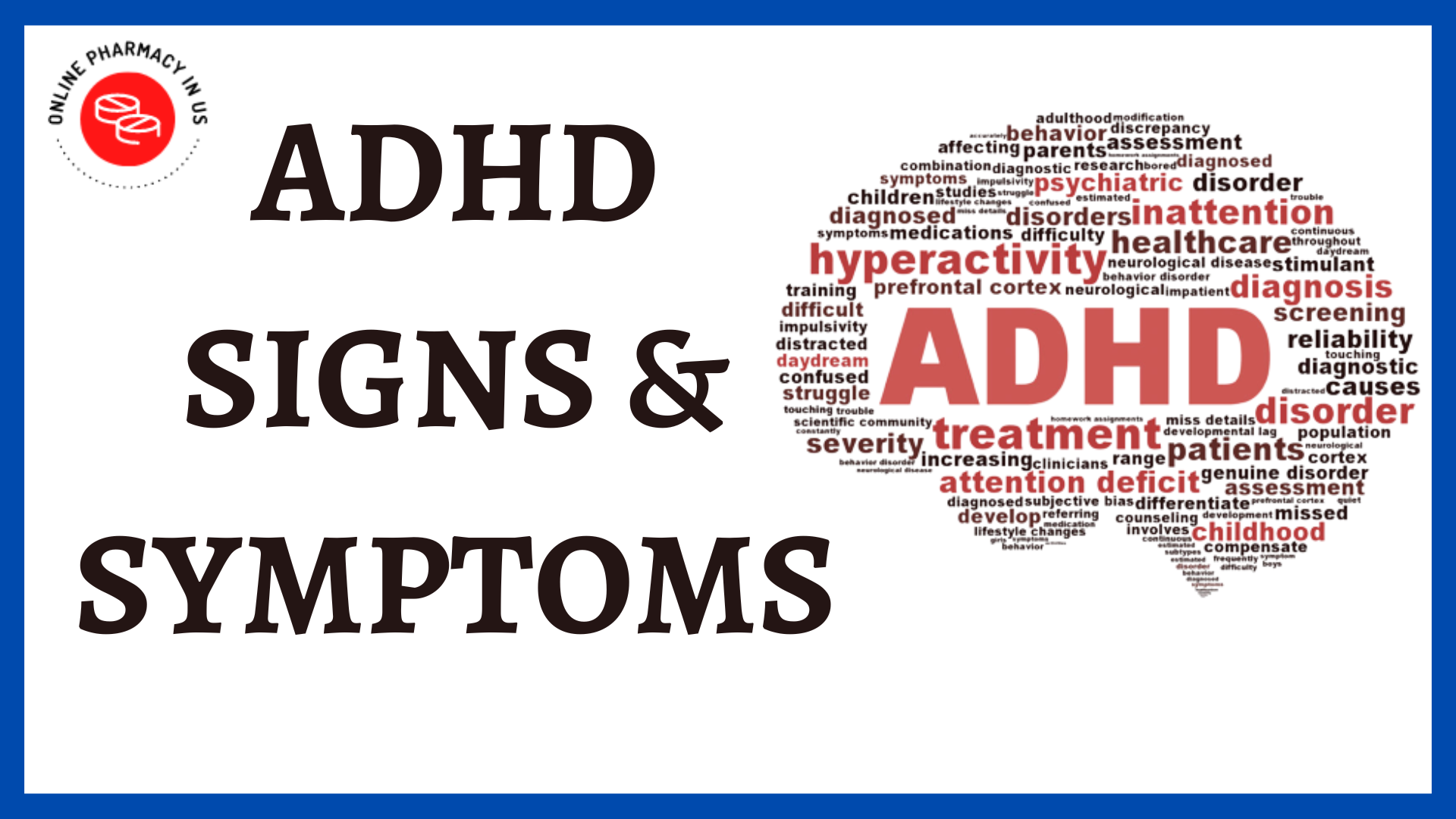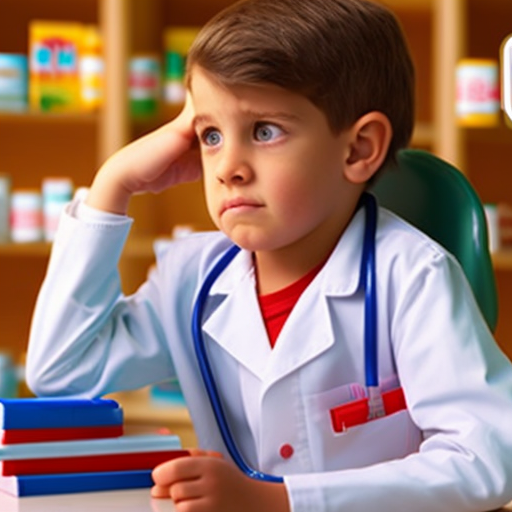Uncategorized
ChatGPT Pharmacy 2023 – Treating Attention Deficit Hyperactivity Disorder
- Attention Deficit Hyperactive Disorder (ADHD): Understanding the Disorder and Its Treatment
- Recognizing the Signs and Symptoms of ADHD
- The Three Different Types of ADHD
- Diagnosing ADHD in a Patient
- Possible Causes of ADHD
- Line of Treatments
- Signs and symptoms used to recognize if you or someone you know has ADHD-
Attention Deficit Hyperactive Disorder (ADHD): Understanding the Disorder and Its Treatment
Attention Deficit Hyperactive Disorder (ADHD) is a common neurodevelopmental pediatric disorder that affects a child’s ability to stay focused, pay attention, and control behavior and hyperactivity. ADHD typically has a childhood-onset and can persist into adulthood if left untreated. It is more prevalent in males, and early diagnosis and behavioral therapy can improve treatment outcomes.
The symptoms of ADHD can significantly impact daily life, interfering with schoolwork, completing daily tasks, and maintaining relationships. Early diagnosis is crucial for effective treatment. The three primary issues that all ADHD patients face are overactive behavior, impulsive behavior, and difficulty paying attention.
Recognizing the Signs and Symptoms of ADHD
Recognizing the signs and symptoms of ADHD is essential for early diagnosis and treatment. The symptoms of ADHD in children include inattentiveness, daydreaming, forgetfulness, easily distracted, making careless mistakes, difficulty getting along with others, hyperactivity, fidgeting, difficulty staying in one place, talking excessively, trouble waiting for their turn, and impatience with tasks and people.
The symptoms of ADHD in adults include anxiety, low self-esteem, trouble controlling anger, procrastination, trouble concentrating while reading, and mood swings. ADHD in adults is often undiagnosed, leading to issues with work or relationships. Symptoms for adults primarily involve hyperactive behavior that can appear as extreme restlessness and worsen with age if left untreated.
The Three Different Types of ADHD
There are three different types of ADHD: predominantly inattentive presentation, predominantly hyperactive-impulsive presentation, and combined presentation. Predominantly inattentive presentation involves difficulty organizing or finishing tasks, paying attention to details or following instructions and conversations. Predominantly hyperactive-impulsive presentation involves difficulty sitting still, involuntary fidgeting, an urge to talk endlessly, interrupting others, grabbing things from people, or speaking at inappropriate times. Combined presentation is when the symptoms of predominantly inattentive presentation and predominantly hyperactive-impulsive presentation are equally visible in the patient.
Diagnosing ADHD in a Patient
Diagnosing ADHD in a patient takes several steps, and a single test cannot determine if someone has ADHD. Symptoms of depression, anxiety, certain learning disabilities, and sleep problems can mimic ADHD symptoms, making it challenging for doctors to diagnose accurately. It is crucial for people around children exhibiting signs of ADHD to be more understanding and not take their behavior as something they can control without help. Parents, doctors, teachers, and therapists should work together for a faster and better recovery.
Possible Causes of ADHD
The causes of ADHD could be genetic, neurological problems, health issues, or damage to the frontal lobe of the brain. ADHD and certain anxiety disorders run in families. Chemicals or areas of the brain that control attention and organizing skills can be out of balance or less active. Poor nutrition, infections, smoking, drinking, and substance abuse during pregnancy can affect brain development.
Line of Treatments
There are several approaches to treating ADHD, but a multimodal approach involving multiple treatment methods that work together is the most effective. Therapists, doctors, teachers, and parents should work together for a more beneficial outcome. Stimulants are prescribed to treat ADHD that can help control hyperactive and impulsive behavior and improve attention span. Adderall is one of the many medications available for the same. Side effects from ADHD medications include anxiety, loss of appetite, fatigue, trouble sleeping, upset stomach, and headache. Other treatments that can help manage the symptoms of ADHD include healthy eating habits, participating in daily physical activity, and limiting screen time from electronic devices to avoid straining.

ADHD, also known as Attention Deficit Hyperactive Disorder is a common neurodevelopmental pediatric disorder where a child may have difficulty staying focused and paying attention and difficulty controlling behaviour and hyperactivity. ADHD usually has a childhood-onset and can continue later if not treated early. It is more common in males, and if spotted during early school, it is easier to treat with behavioural therapy.
Symptoms of ADHD can hinder your day to day life and interfere with schoolwork, office work, completing daily chores and even maintaining relationships with people. The sooner the diagnosis, the sooner the treatment will take effect.
Among other issues like difficulty initiating and maintaining relationships or fitting in a crowd, there are three issues that all ADHD patients face that are the root of the problem and are the central area of treatment.
Patients with ADHD face three kinds of major problems-
1-Overactive behaviour
2-Impulsive behaviour
3-Difficulty in paying attention
Signs and symptoms used to recognize if you or someone you know has ADHD-
Some of the signs of ADHD in children are-
1-Inattentive
1-Daydreaming
2-Forgetting or losing things a lot
3-Easily distracted
4-Making careless mistakes or taking unnecessary risks
5-Have difficulty getting along with others
2-Hyperactive-impulsive
1-Fidgeting
2-Difficulty staying in one place
3-Talking excessively
4-Hav trouble waiting for their turn
5-Impatient with tasks and people
Some of the signs of ADHD in adults-
1-Anxiety
2-Low self-esteem
3-Trouble controlling anger
4-Procrastination
5-Trouble concentrating while reading
6-Mood swings
ADHD in adults is commonly never diagnosed, due to which the symptoms can cause issues with work or relationships. Symptoms for adults are primarily hyperactive behaviour which can appear as extreme restlessness, which can become more severe with age if not treated.
There are three different kinds of ADHD found in people, and it is essential to understand each to determine which category you or your loved one fit in to choose which line of treatment one should follow.
The three different types of ADHD are-
1-Predominantly Inattentive Presentation– It is tough to organize or finish a task, pay attention to details or follow instructions and conversations.
2-Predominantly Hyperactive-Impulsive Presentation: It is tough to sit still for a while, and involuntary fidgeting and an urge to talk endlessly. With impulsive behaviour, one would often interrupt others, grab things from people or speak at inappropriate times.
3-Combined Presentation: A combined Presentation is when the symptoms of Predominantly Inattentive Presentation and Predominantly Hyperactive-Impulsive Presentation are equally visible in the patient.
Diagnosing ADHD in a patient
Understanding if a child has ADHD takes several steps. Unlike those for anxiety and depression, a single test can’t determine if you have ADHD. Depression, anxiety, certain kinds of learning disabilities and sleep problems have symptoms similar to that of an ADHD person, making it challenging for a doctor to diagnose accurately. When a child exhibits signs of or identical to ADHD, it is crucial for people around them to be more understanding of them. Their behaviour mustn’t be taken as something they can control without help. Parents, doctors, teachers and therapists should cooperate for a faster and better recovery.
What are the possible causes of ADHD?
The causes of ADHD could be
1-Genes – ADHD and certain anxiety disorders run in families
2-Neurological problems – Chemicals or areas of the brain that control attention/organizing skills can be out of balance or less active
3-Health issues – Poor nutrition, infections, smoking, drinking and substance abuse during pregnancy can affect brain development.
4- Damage to the frontal lobe of the brain.
Line of Treatments
There are several approaches to treating ADHD. According to research, the best way is a multimodal approach involving multiple treatment methods that work together. For a more beneficial outcome, therapists, doctors, teachers and parents should work together.
Medication:
Stimulants are prescribed to treat ADHD that can help control hyperactive and impulsive behaviour and improve attention span. Adderall is one of the many medications available for the same. Adderall is a central nervous system stimulant that affects the chemicals in the brain that contribute to hyperactivity and impulse control.
Side effects from ADHD medications include-
1-Anxiety
2-Loss of appetite
3-Fatigue
4-Trouble sleeping
5-Upset stomach
6-Headache
Treatments other than medications that can help manage the symptoms of ADHD are-
1-Healthy eating habits like inculcating fruits, vegetables, and whole grains into your diet
2-Participating in daily physical activity based on your interests
3-Limiting the daily screen time from phones, computers, laptops and other electronic devices to avoid straining.

 Skip to content
Skip to content


